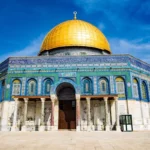Buckle up, ’cause we’re heading to a place that’ll make your jaw drop: Donegal Town. Picture this: a town that’s like a fairy tale, tucked away on Donegal Bay. It’s got everything you could want – stunning scenery, stories of Vikings and Irish legends, and friendly locals who will make you feel like you’re part of the family. So, let’s jump into the time machine and explore the magical streets of Donegal Town!
A Captivating Blend of History and Nature
Nestled on the Emerald Isle, where the wild Atlantic waves crash against rugged cliffs, lies the captivating town of Dún na nGall, better known to many as Donegal Town. This isn’t just any town; it’s a place where history whispers on the wind and beauty unfolds at every turn. Imagine a place where the echoes of Viking raids mingle with the melodies of traditional Irish music, where ancient castles stand guard over a vibrant town center. That’s Dún na nGall.
The town’s name, meaning “Fort of the Foreigners,” hints at its early beginnings. In the 9th century, Viking seafarers and warriors set their sights on this strategic location at the mouth of the River Eske. The sheltered harbor and access to the vast Atlantic Ocean made it a prime spot for their settlement.
Centuries later, Dún na nGall found itself at the heart of a powerful Gaelic kingdom, Tyrconnell. The legendary O’Donnell clan ruled the region, leaving their mark on the town’s architecture, culture, and spirit. The bustling streets of that era were likely filled with merchants, artisans, and storytellers, all contributing to the vibrant tapestry of life in Dún na nGall.
But history isn’t just something you read about in books in Dún na nGall; it’s woven into the very fabric of the town. Walk through the imposing gates of Donegal Castle, and you can almost hear the clash of swords and the murmur of courtly intrigue. This 15th-century fortress, overlooking the River Eske, stands as a proud reminder of the O’Donnell reign and the town’s strategic importance.
Experiencing Donegal’s Rich Heritage
Venture beyond the castle walls, and you’ll find a town that embraces both its past and present. The Donegal County Museum offers a fascinating glimpse into the region’s rich history, from prehistoric times to the present day. There, you can explore artifacts, exhibitions, and stories that bring the past to life.
For a taste of authentic Irish culture, head to the Ionad Cultúrtha (Cultural Centre). The lively sounds of traditional music will draw you in, inviting you to tap your feet and maybe even learn a few steps yourself. The center offers language classes, too, so you can pick up a few words of Gaelic and impress the locals.
Gateway to the Wild Atlantic Way
Dún na nGall isn’t just a destination; it’s a starting point for adventures along the Wild Atlantic Way, one of the world’s longest defined coastal driving routes. Imagine cruising along rugged cliffs, the wind whipping through your hair, as breathtaking views of the Atlantic Ocean unfold before you. The nearby Slieve League Cliffs, some of the highest sea cliffs in Europe, offer a truly awe-inspiring spectacle.
Whether you’re captivated by history, drawn to natural beauty, or simply seeking a charming escape, Dún na nGall promises an unforgettable experience. It’s a place where ancient legends meet modern-day life, where the warmth of Irish hospitality welcomes you like an old friend, and where the rugged beauty of the Emerald Isle will stay with you long after you’ve bid farewell.
What does dún na nGall mean?
We’ve been talking about the town of Dún na nGall, and you might be curious about what that name actually means. Well, it’s like a little history lesson in itself!
“Dún,” first off, is a word you’ll see all over Ireland. It means “fort” and it’s a big clue about Ireland’s past, what with all the castles and ancient strongholds they had.
But “Dún na nGall” is even more interesting. “Gall” means “foreigner,” and that takes us back to the Vikings who arrived on Ireland’s shores back in the 9th century and built themselves a base right here. So, “Dún na nGall” basically means “Fort of the Foreigners.”
However, this area had a whole other life before the Vikings showed up. Back then, it was called “Tír Chonaill,” meaning “Conall’s Land,” likely named after a powerful Irish king. This name reminds us that Gaelic culture was alive and well here long before any Viking ships appeared on the horizon.
So, “Dún na nGall” isn’t just a name; it’s a story. It tells us about the Vikings who landed here, but it also whispers about the Gaelic people who called this land home for centuries before. It’s a blend of two cultures, woven together like the threads in a tapestry. And that’s what makes Dún na nGall, the place we now call Donegal Town, so fascinating – it’s a living, breathing reminder of the past.
Is Donegal Irish or Scottish?
Let’s clear up any confusion – Donegal is undeniably Irish. While its name, “Dún na nGall,” meaning “fort of the foreigners,” might spark curiosity, it speaks more to the region’s historical encounters with Viking settlers rather than any Scottish connection. Donegal stands proudly as a county within the Republic of Ireland, boasting a rich tapestry of Gaelic heritage and a vibrant cultural identity that’s distinctly Irish.
Think of it this way: Donegal is to Ireland what Texas is to the United States – a place with a strong personality and a unique history, but still very much a part of the larger nation.
The name “Dún na nGall” is a reminder of Donegal’s layered past. The Vikings did leave their mark, but their influence is considered by some historians to be less significant compared to the enduring legacy of the Gaelic clans. These clans, with their deep roots in Irish soil, shaped Donegal’s identity, imbuing it with a distinct Gaelic character that thrives to this day.
The spirit of the Gael is woven into the very fabric of Donegal life. The Irish language, a melodic testament to the region’s heritage, is spoken by many locals. Traditional music, with its haunting airs and lively jigs, fills the air, inviting everyone to tap their feet and lose themselves in the rhythm.
It’s easy to see why some might wonder about Donegal’s allegiance. After all, it shares a border with Northern Ireland, a region with close ties to both Ireland and Scotland. But let’s be clear: Donegal is not part of Northern Ireland. It stands apart, a vibrant testament to Irish culture, language, and tradition.
So, while the name “Dún na nGall” might hint at a shared history with those from across the northern sea, make no mistake – Donegal’s heart beats with an Irish rhythm.
Why is Donegal called the forgotten county?
Donegal, tucked away in the northwestern corner of Ireland, is a place of breathtaking scenery and a culture as rich as its history. But despite its undeniable charm, it’s sometimes called the “forgotten county.” Why would a place so special be given such a name? Well, it’s a bit of a puzzle, a mix of geography, history, and economics all woven together.
Historically, Donegal’s remote location and challenging terrain made it difficult to access, leading to a sense of isolation from major urban centers like Dublin and Belfast. This physical distance contributed to a feeling of being “out of sight, out of mind.”
Adding to this sense of isolation, some argue that Donegal was historically overlooked by those in power, particularly during British rule. It’s suggested that the region didn’t receive the same level of investment and attention as other parts of Ireland, which may have fostered resentment and a sense of being left behind among the locals.
Furthermore, traditional ways of life in Donegal, such as fishing and farming, have faced challenges in recent times. Economic hardship and a lack of job opportunities have led some residents to seek work elsewhere, contributing to a perception of decline and neglect.
However, it’s crucial to remember that “forgotten” is a subjective term and doesn’t reflect the entirety of Donegal’s story. The people of Donegal are known for their resilience, their deep connection to their heritage, and their unwavering pride in their homeland.
Despite the challenges it has faced, Donegal is a place where ancient traditions endure. From archaeological sites and historic churches to the vibrant music scene and the prevalence of the Irish language, the county’s rich cultural tapestry is undeniable.
So, while the nickname “forgotten county” might linger, it’s essential to look beyond this label and recognize the unique spirit and undeniable beauty that define Donegal. It’s a place that rewards those who venture off the beaten path with a glimpse into the heart of Ireland’s soul.
Key Points:
- Dún na nGall (Donegal Town) is a captivating town located on the Emerald Isle, where history intertwines with stunning natural beauty.
- The town’s name, “Fort of the Foreigners,” reflects its origins as a Viking settlement in the 9th century.
- It later became the center of the Gaelic kingdom of Tyrconnell, ruled by the O’Donnell clan.
- Donegal Castle, a 15th-century fortress, stands as a reminder of the town’s strategic importance and the O’Donnells’ reign.
- The Donegal County Museum showcases artifacts and exhibits that delve into the region’s rich history.
- The Ionad Cultúrtha (Cultural Centre) offers traditional music, language classes, and insights into Irish culture.
- Dún na nGall is the gateway to the Wild Atlantic Way, one of the world’s longest coastal driving routes.
- The nearby Slieve League Cliffs boast some of the highest sea cliffs in Europe, offering breathtaking views.
- Visitors can expect an unforgettable experience in Dún na nGall, where ancient legends meet modern life and the warmth of Irish hospitality prevails.
Please provide the competitor titles and “People’s Statements” you mentioned, and I’ll incorporate them to further enhance the article.
- Crypto Quotes’ Red Flags: Avoid Costly Mistakes - June 30, 2025
- Unlock Inspirational Crypto Quotes: Future Predictions - June 30, 2025
- Famous Bitcoin Quotes: A Deep Dive into Crypto’s History - June 30, 2025

















1 thought on “Unveiling Dún na nGall: The Untamed Beauty and Timeless History of Donegal Town”
Comments are closed.